The Toyota Yaris Cross was launched in Australia way back in August 2020, and in 2024 it received an overdue upgrade to its interior technology.
It is the Japanese brand’s smallest and most affordable ‘SUV’, but with flashy, affordable newcomers hitting the local light SUV scene in recent months, is this ageing compact crossover still worth a look?
Read on, and you’ll find out.
How does the Toyota Yaris Cross compare?
View a detailed breakdown of the Toyota Yaris Cross against similarly sized vehicles.

Toyota
Yaris Cross
How much does the Toyota Yaris Cross cost?
In 2024, Toyota adjusted the Yaris Cross lineup, from which the pure petrol-powered variants were dumped to make way for a hybrid-only range with some improved technology.
As you may have predicted, that means the entry price has risen, and across the board this is a more expensive compact SUV than some of the others you might consider.
Across most versions there is still the choice of front- or all-wheel drive, which improves its appeal among the front-drive dominant compact crossover segment.
The Yaris Cross range is priced in a position where it is competing with newer models like the Chery Tiggo 4 Pro and the latest MG ZS, as well as the refreshed Skoda Kamiq and Volkswagen T-Cross.
| Model | Price before on-road costs |
|---|---|
| 2025 Toyota Yaris Cross GX Hybrid | $30,900 |
| 2025 Toyota Yaris Cross GX Hybrid AWD | $33,900 |
| 2025 Toyota Yaris Cross GXL Hybrid | $33,950 |
| 2025 Toyota Yaris Cross GXL Hybrid AWD | $36,950 |
| 2025 Toyota Yaris Cross Urban Hybrid | $36,880 |
| 2025 Toyota Yaris Cross GR Sport Hybrid | $36,930 |
| 2025 Toyota Yaris Cross Urban Hybrid AWD | $39,880 |
If you want to see how the Toyota Yaris Cross lines up against the competition, check out our comparison tool
What is the Toyota Yaris Cross like on the inside?
There have certainly been some improvements to the cabin design of the updated Yaris Cross, with a bit more wow-factor courtesy of a larger new 8.0-inch infotainment screen and a now-standard fully-digital 7.0-inch instrument cluster.
That driver info screen also has a number of themes and information displays on offer, and it’s all very easy to get your head around by using the steering wheel controls to adjust what’s on show.
However, it is flanked by a set of more basic gauges, and while the screen sizes make it feel at least a bit more modern than its predecessor, by class standards it’s already out of date. It might officially be a larger (small, rather than light) SUV, but for not that much more money the new MG ZS Hybrid+, for example, has twin 12.3-inch screens across the range.
Even so, the useability and controls on offer in the Toyota are good, with a volume dial to make quick adjustments, and there are standard climate controls down below with buttons – far simpler than diving through menus on a screen.
And maybe that’s the best way to think of the cabin – simple, but effective. There are ample storage options up front, including a tray below the screen, and another in front of the gear selector – neither of which includes a wireless phone charger, unfortunately.
Beyond that there are cupholders, a covered pocket in the adjustable centre armrest, and good sized bottle holders as well.
The finishes are fine, but nothing special. There’s cloth seat trim in the GXL, hard plastics across the dash, and a microfibre trim on the front doors, while rear seat occupants just get hard plastic finishes – great if you have grubby kids, but less good for adult elbows.
Rear seat space is more generous than you might expect of a sub-4.2m SUV. At 182cm/6’1”, I could fit behind my own driving position with my kees just brushing the seat ahead, but with good foot space and enough head and shoulder space to feel comfortable… but there was no-one next to me.
Three across will be VERY tight, but you can fit two adults in the back with ease, or two child seats if you need to. There are outboard ISOFIX child seat anchor points and three top-tethers, and while the middle seat doesn’t have a flip-down armrest, it does fold down completely to access a ski-port load-through space, and there are cupholders there, too.
Otherwise, it’s a bit bare in the second row, with just one map pocket on the front passenger’s seatback, and bottle holders in the doors. There are no air-vents, and no USB charge ports, either.
The biggest annoyance with the second-row, though, is that the doors don’t open very far. Lifting a kiddo in is painful, especially if you’re an awkward unit, and you almost feel like you’re going to rip the door clean off when you try and open it with too much gusto.
Boot space is quite good in the Yaris Cross, with 390 litres of cargo capacity in the front-wheel drive versions, but that shrinks to just 314 litres in AWD models, because of the revised rear suspension design. There are a couple of shopping bag hooks and a light in the back, too.
In 2WD variants you get a removeable flooring system that allows you to get more out of the space, and below that there’s still a space-saver spare wheel, as is standard in all versions.
| Dimensions | Toyota Yaris Cross Hybrid |
|---|---|
| Length | 4180mm |
| Width | 1765mm |
| Height | 1590mm |
| Wheelbase | 2560mm |
| Cargo capacity | 390L (5 seats) |
If you want to see how the Toyota Yaris Cross lines up against the competition, check out our comparison tool
What’s under the bonnet?
As mentioned, the Yaris Cross lineup has seen the traditional petrol engines dumped, with all models now running a petrol-electric hybrid system, which is now branded and badged HEV by Toyota.
| Specifications | Toyota Yaris Cross GXL Hybrid |
|---|---|
| Engine | 1.5L 3cyl petrol |
| Engine outputs | 67kW/120Nm |
| Electric motor outputs | 59kW/141Nm |
| System outputs | 85kW |
| Battery | 4.3Ah lithium-ion |
| Transmission | e-CVT |
| Drive type | FWD |
| Weight (kerb) | 1235kg |
| Fuel economy (claimed) | 3.8L/100km |
| Fuel economy (as tested) | 4.1L/100km |
| Fuel tank capacity | 36L |
| Fuel requirement | 91-octane regular unleaded |
| CO2 emissions | 85g/km |
| Emissions standard | Euro 5 |
| Braked tow capacity | 400kg |
If you want to see how the Toyota Yaris Cross lines up against the competition, check out our comparison tool
How does the Toyota Yaris Cross drive?
This is a good little SUV to drive, provided that you’re okay with things being a little loud.
There’s a lot more engine noise in this car than in many rivals, with the three-cylinder engine offering a hearty warble in a mix of situations.
It’s probably exacerbated by the fact it’s a hybrid, and the electric motor can take care of momentum at times – meaning that, in essence, it can be close to silent before the petrol engine makes quite the racket when it gets up and running.
And it’ll be even more vocal if you drive in B mode, rather than D. That mode is designed to maximise battery regeneration, and it will make the engine more actively work as a generator to fill up the battery to make EV driving more doable.
The downside, yes, is that it vibrates notably and may also make you think there’s something wrong with the car, if you’re not familiar with how it all works.
But it’s not just the engine that’s loud – it’s generally a very noisy experience, with loads of road noise entering on rougher surfaces, and noticeable intrusion from outside elements like other cars, trucks, buses and even cicadas. Drive it in the rain, and you might be surprised how clearly you can hear the weather inside the cabin.
But noisy stuff aside, it’s a bloody good thing to drive.
The steering is accurate and has some liveliness to it, with predictable responses at parking pace or when you’re threading through traffic on the freeway.
Ride comfort and body control are also very good. It has a slightly sharp edge to the suspension at times, but it feels assured and confident – bigger than its diminutive dimensions suggest, in fact.
And the braking response is also excellent. It doesn’t suffer from a lack of feel despite the regenerative braking system, and pulls up quickly and confidently.
There is also a big plus in terms of safety technology integration. Unlike some of the other models in this class, it doesn’t get on your nerves in terms of the tech. There is a speed sign recognition system, but it doesn’t chime at you, and the lane-keeping technology is pretty well measured, too.
While the powertrain is a vocal one, it’s pretty smooth in the way it switches between EV and petrol modes, and if you really need to get on the move, it hustles along quicker than you’d expect.
Really, it’ll come down to whether you can handle the noise, vibration and harshness of the drive experience or not.
If you want to see how the Toyota Yaris Cross lines up against the competition, check out our comparison tool
What do you get?
On test here is the GXL variant, which is one trim level up from base.
2025 Toyota Yaris Cross GX Hybrid equipment highlights:
- Halogen headlights
- Automatic high-beam
- LED tail lights
- Electronic parking brake
- 16-inch alloy wheels with 205/65R16 tyres
- Space-saver spare (tyre repair kit with AWD)
- Power-folding exterior mirrors
- Toyota Connected Services
- 7.0-inch digital instrument cluster
- 8.0-inch touchscreen infotainment system
- Wireless Apple CarPlay and Android Auto
- DAB+ digital radio
- Cloud-based satellite navigation
- Six-speaker sound system
- 2 x USB-C outlets
- Cloth upholstery
- 40/20/40 split fold rear seats
- 3 x rear ISOFIX and 2 x top tether child seat anchor points
- Leather-accented steering wheel
- Tilt and telescopic steering wheel adjustment
- Illuminated vanity mirrors
- 2 x rear grab handles
- Centre console with soft armrest
- 2 x front and 2 x rear cupholders
- Automatic climate control
- Keyless entry and start
Yaris Cross GXL Hybrid adds:
- LED headlights
- LED reversing lights
- Rear privacy glass
- Front and rear parking sensors
- Front and rear parking support brake
- Blind-spot monitoring
- Safe exit assist
- Surround-view camera
If you want to see how the Toyota Yaris Cross lines up against the competition, check out our comparison tool
Is the Toyota Yaris Cross safe?
The Toyota Yaris Cross has a five-star safety rating from ANCAP, based on testing conducted in 2021.
| Category | Toyota Yaris Cross |
|---|---|
| Adult occupant protection | 86% |
| Child occupant protection | 86% |
| Vulnerable road user protection | 78% |
| Safety assist | 82% |
Standard safety equipment includes:
- Autonomous emergency braking
- Pedestrian
- Daylight cyclist
- Motorcyclist
- Oncoming vehicle
- Intersection collision avoidance
- Emergency steering assist
- Low-speed acceleration suppression
- Adaptive cruise control
- Lane trace assist (lane centring)
- Traffic sign recognition
- Reversing camera
GXL adds:
- Front and rear parking sensors
- Front and rear parking support brake
- Blind-spot monitoring
- Safe exit assist
- Surround-view camera
All Yaris Cross variants come with eight airbags – dual front, driver’s knee, front centre, front side, and full-length curtains.
If you want to see how the Toyota Yaris Cross lines up against the competition, check out our comparison tool
How much does the Toyota Yaris Cross cost to run?
As with all Toyota models, the Yaris Cross is backed by a five-year, unlimited-kilometre warranty.
If you service on time you’ll eligible for seven years of powertrain warranty as well. Plus, if you service with Toyota, they’ll check the battery and hybrid system, with those annual health-checks ensuring a 10-year warranty cover on the battery bits.
Toyota offers capped-price servicing for the first five years or 75,000km, whichever comes first.
Servicing is required every 12 months or 15,000km, with each visit costing $250. Cheap!
You’ll need to budget an extra hundred bucks a year for roadside assistance, though. Many other brands include that in the purchase price, but charge a little more for maintenance.
If you want to see how the Toyota Yaris Cross lines up against the competition, check out our comparison tool
CarExpert’s Take on the Toyota Yaris Cross
You could do worse than to get into a Toyota Yaris Cross. This is an efficient and interesting little SUV, with some clever interior packaging and an improved cabin design.
But you’ll have to be okay with a noisy drive experience, and it lacks some bling compared to newer rivals.
Even so, I’d suggest you give it a go if you’re in the market for a city-friendly hybrid SUV.
Interested in buying a Toyota Yaris Cross? Get in touch with one of CarExpert’s trusted dealers here
Click the images for the full gallery
MORE: Everything Toyota Yaris Cross


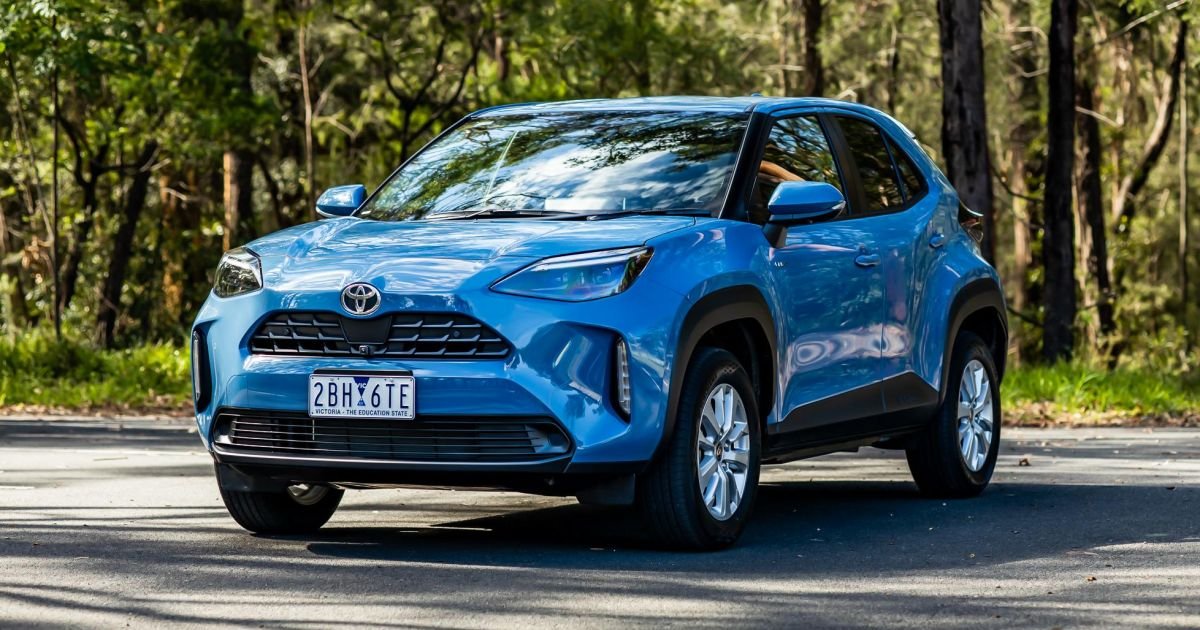

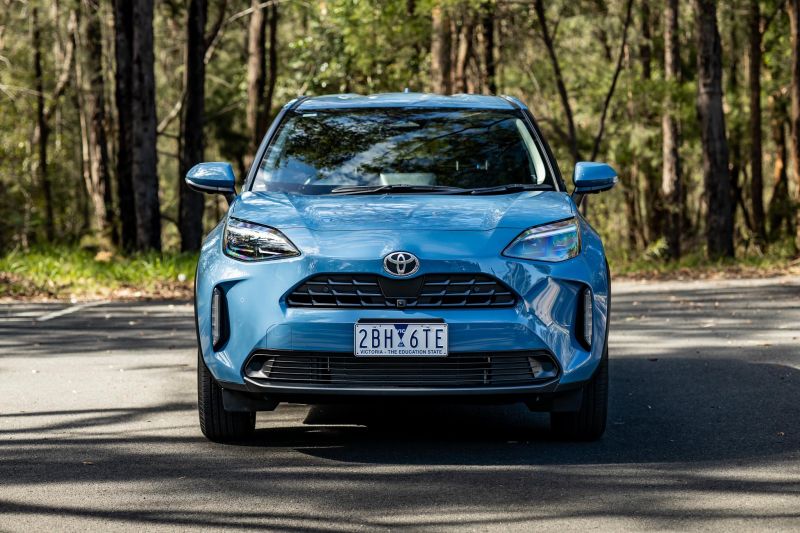
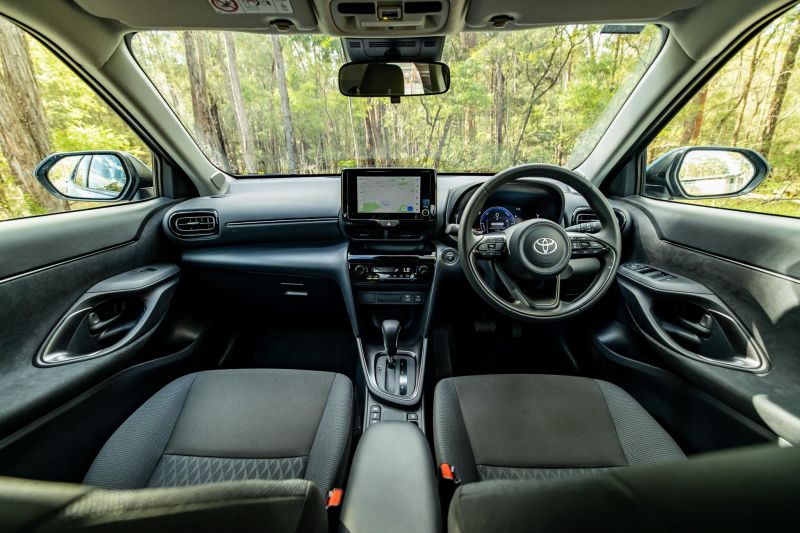
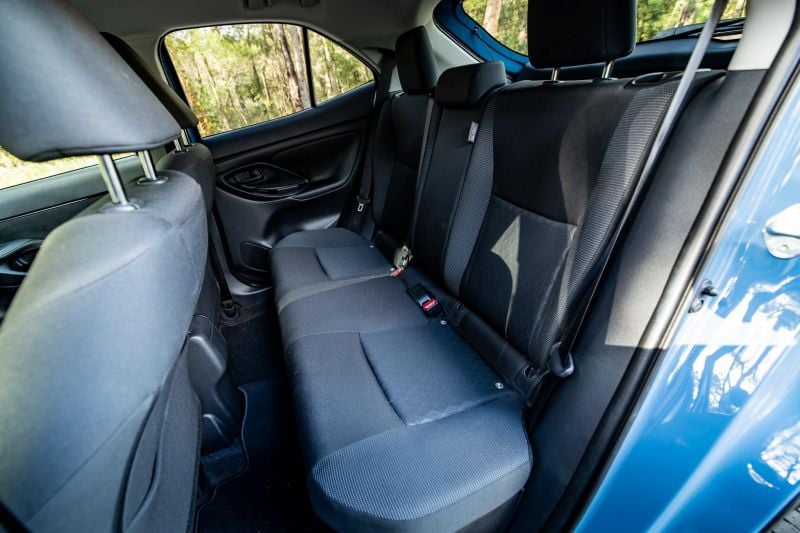
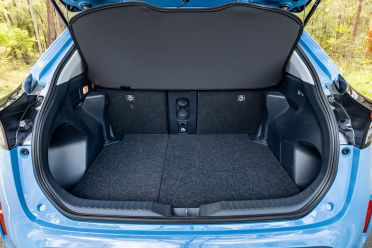
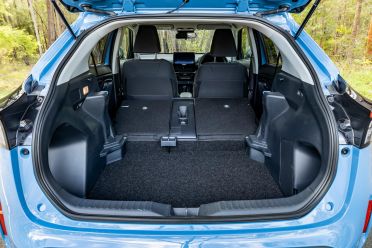
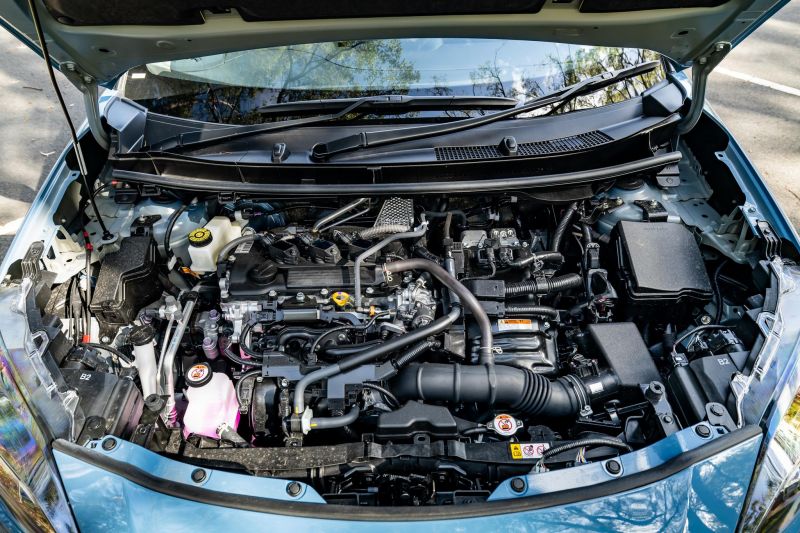
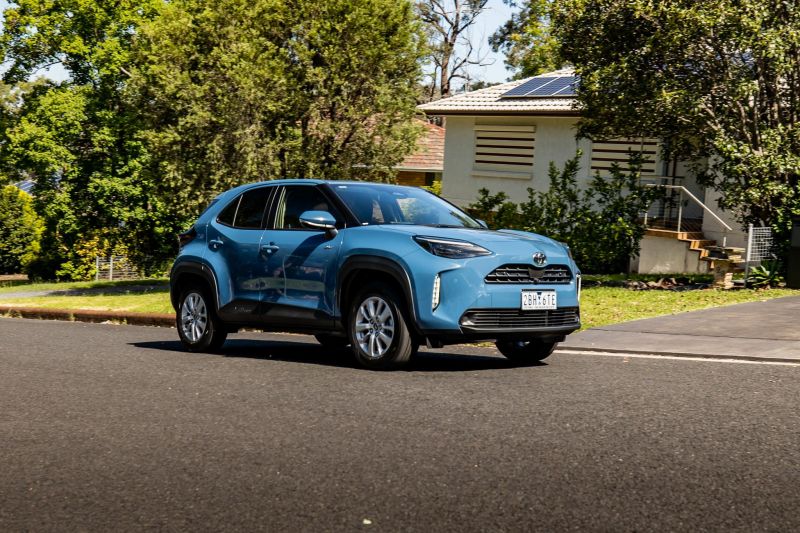
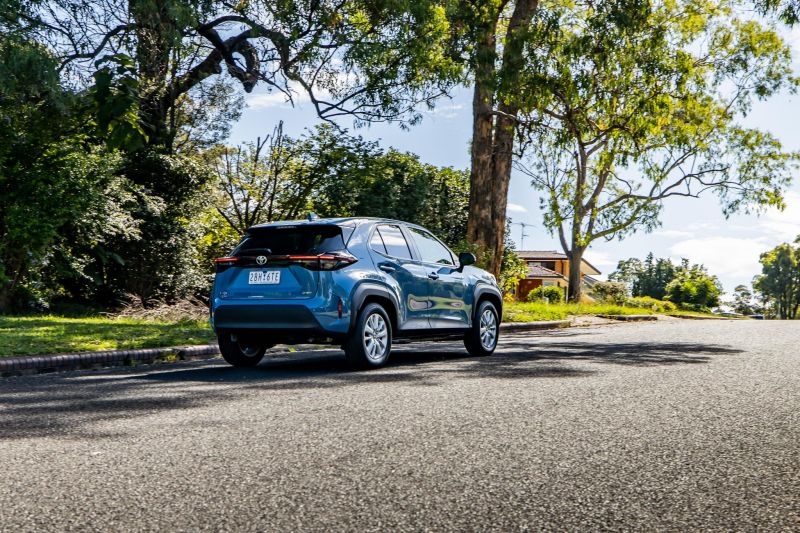
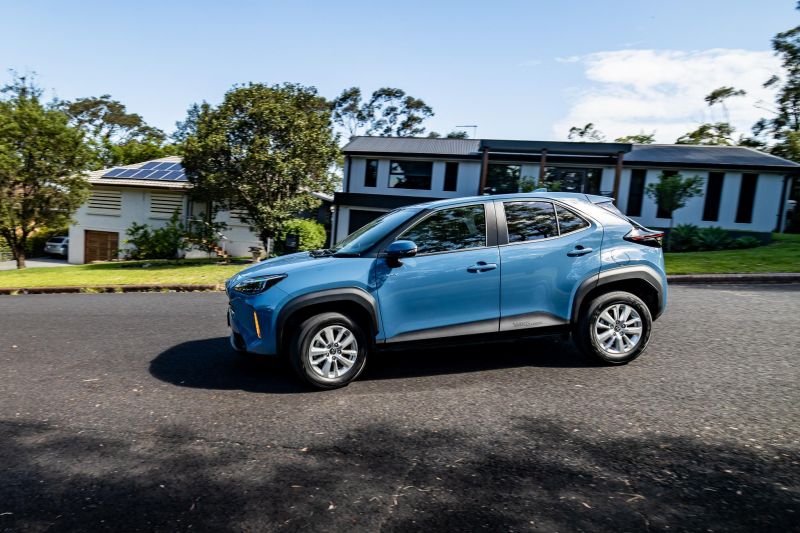
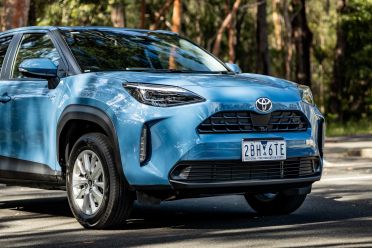
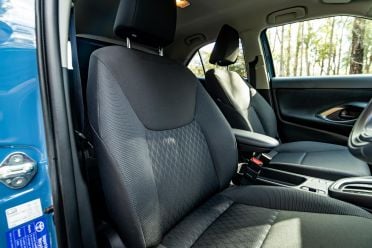
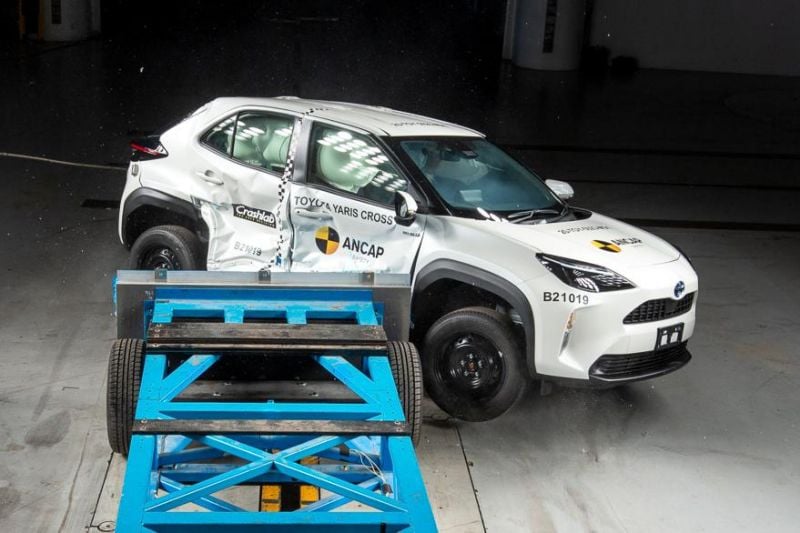
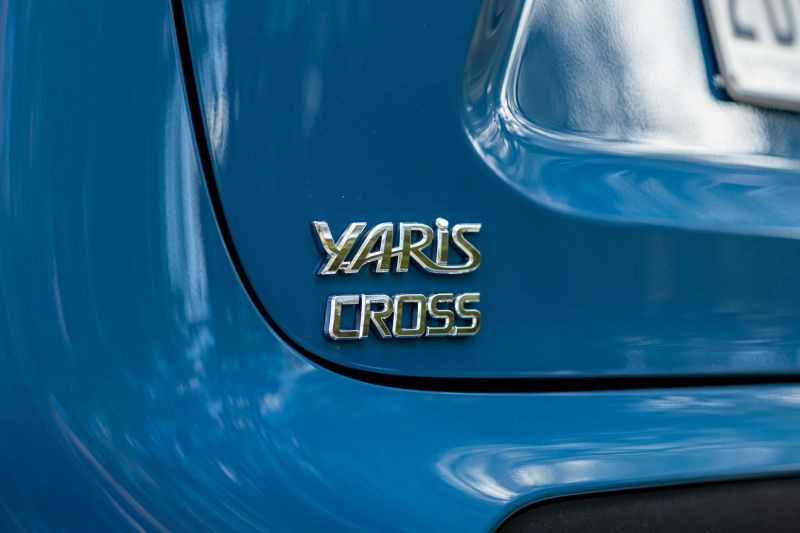
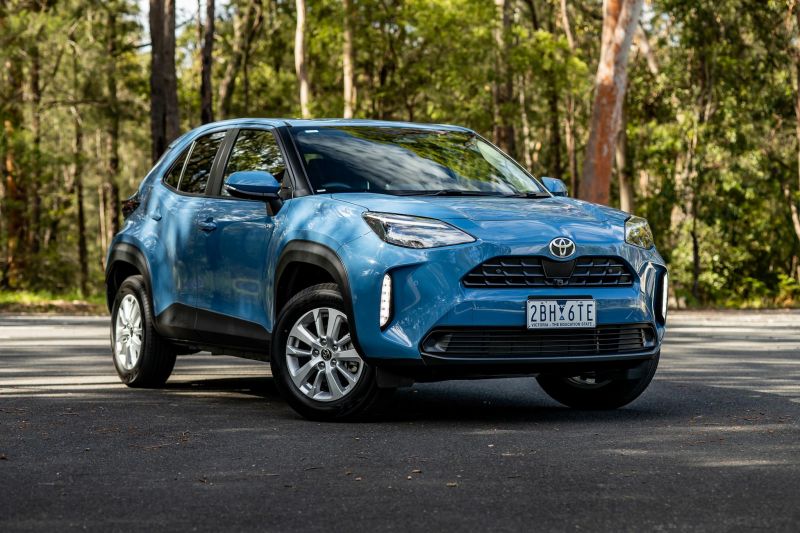









Leave a Reply